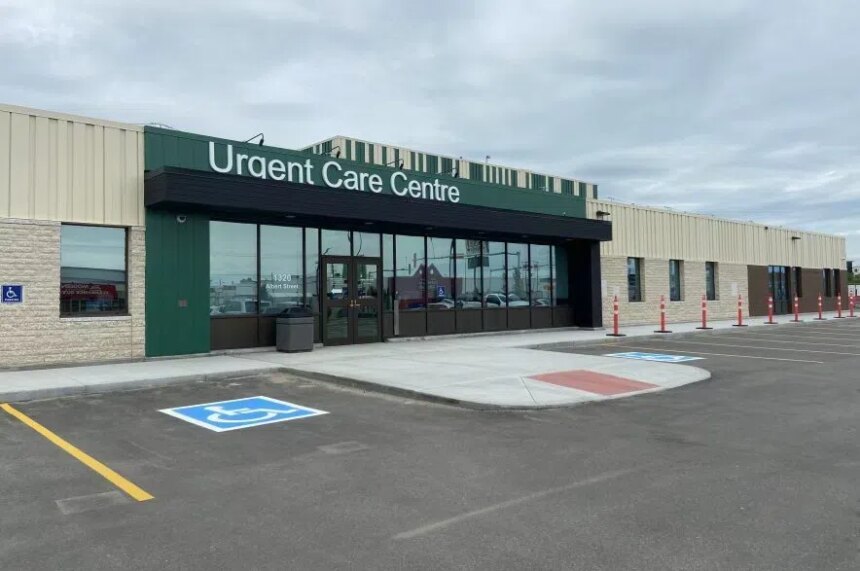Standing outside Regina’s sprawling Urgent Care Centre as the afternoon light begins to fade, I watch as a mother hurries her limping teenage son toward the entrance. It’s 3:42 p.m. on a Sunday, and they’re cutting it close. By 4 p.m., these doors will lock—not because of standard operating hours, but because there simply aren’t enough doctors to keep them open.
“We’ve been waiting all weekend for his ankle to improve,” she tells me, shifting her weight nervously. “I thought these places were supposed to be the solution to ER overcrowding.”
Her frustration echoes across Regina as the city’s much-celebrated Urgent Care Centre faces yet another Sunday of reduced hours. The facility, designed to operate until 10 p.m. daily, has been closing early on Sundays for three consecutive weeks due to physician staffing shortages.
“It’s a perfect storm of summer vacations, physician burnout, and a system that was already stretched thin,” explains Dr. Anita Singh, who agreed to speak with me during her brief lunch break. She’s worked double shifts twice this month already. “We’re seeing the consequences of years of healthcare planning that didn’t adequately account for population growth or physician retention.”
The $15.4 million facility opened in 2023 with promises to divert non-emergency cases from Regina’s overtaxed emergency rooms. According to Saskatchewan Health Authority data, the centre has successfully handled over 24,000 patient visits in its first year—approximately 75-80 patients daily. But current staffing levels can’t sustain the intended hours of operation.
Walking through the waiting room, I notice about a dozen patients—some scrolling through phones, others staring anxiously at the wall-mounted clock. At the front desk, a staff member is explaining to an elderly couple that they’ll need to go to the General Hospital’s emergency department if they can’t be seen before closing.
“It’s not what we want to be doing,” says nurse coordinator Melissa Tootoosis. “We’re supposed to be taking pressure off the ER, not sending people there. But we can’t safely see patients without physician coverage.”
Saskatchewan currently has a provincial doctor shortage of approximately 130 physicians, with rural areas and specialized services hit hardest. The Saskatchewan Medical Association has been warning about this crisis for years, pointing to competitive recruitment from other provinces and physician burnout as key factors.
“Working in urgent care is demanding at the best of times,” says Dr. Singh. “We’re seeing everything from minor injuries to people with chronic conditions who can’t access primary care. When we’re short-staffed, the burden on each provider increases exponentially.”
Outside in the parking lot, I meet Jordan Williams, who drove 40 minutes from White City with his seven-year-old daughter who has an infected cut on her arm. It’s 3:55 p.m.
“I specifically chose today because I thought it would be less busy on a Sunday,” he says, unaware of the reduced hours until he saw the sign at the entrance. “Now we have to decide between waiting hours at the ER or hoping this isn’t serious enough to wait until tomorrow.”
The Saskatchewan Health Authority issued a press release Friday announcing the reduced Sunday hours would continue “until further notice” while they work on recruitment and scheduling solutions. They’ve promised to reassess the situation weekly, but internal documents obtained through freedom of information requests show the physician shortage is projected to worsen through the summer months.
For Regina resident Elaine Brass, the situation highlights deeper issues in the healthcare system. “My husband waited four hours at the General’s ER last month for something that should have been handled at urgent care,” she tells me as she leaves the centre after having a cast removed. “They keep building new facilities without making sure there are enough healthcare workers to staff them.”
The Ministry of Health has responded by pointing to their physician recruitment incentives, including recent increases to the Rural and Remote Practice Incentive program and a new $30,000 signing bonus for doctors willing to commit to underserved communities.
“These measures take time to show results,” acknowledges Ministry spokesperson David Connelly. “We’re working closely with the Saskatchewan Medical Association and medical schools to address the immediate shortfall while building long-term solutions.”
Back inside, the final patients are being triaged as the 4 p.m. closure approaches. Staff move efficiently, but the atmosphere is tense. A security guard begins politely informing new arrivals that the centre is no longer accepting patients.
Dr. Singh removes her stethoscope and sighs. “People think of urgent care as something that’s always available when you need it. The reality is we’re operating in a system with finite resources and increasing demands.”
As I leave the facility, I notice the mother and son I saw earlier sitting in a treatment area, having made it just in time. Others weren’t so fortunate. The urgent care model was supposed to bridge the gap between primary care and emergency services, but on Sundays in Regina, that bridge now closes before dinner time.
The challenge facing Regina’s healthcare system isn’t unique. Across Canada, the pandemic exposed and exacerbated existing healthcare staffing shortages. But for residents of Saskatchewan’s capital city, the reduced hours at this vital facility represent a troubling step backward in healthcare accessibility—and a reminder that buildings alone don’t heal people.






